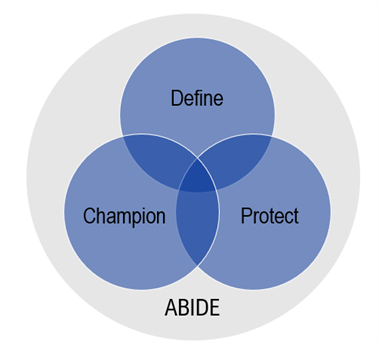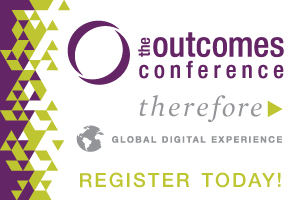
Mission Drift Part II: How to Avoid It By Becca Spradlin

With the Right Focus – You Can Avoid Mission Drift!
Today we continue the conversation from Part I on Mission Drift with a focus on how to avoid it. In the nonprofit sector, there are practical steps leaders can take to avoid drifting and continue to maximize their organization’s eternal impact.
As drift within an organization increases, it is eventually detectable in its language. Reflecting on drift observed in their own organization, an executive director shared that the “first language” of the organization — the language about its Primary Purpose of sharing the love of God — was spoken less and less while its “second language” regarding the technical aspects of programs was becoming the only language spoken.
Because of the nuance, subtlety, and subjectivity of drift, it is critical for organizations interested in avoiding drift to start by defining what matters most.
STRATEGY 1: DEFINE
How well have you defined the Mission of your organization? The capital “M” Mission often goes beyond the mission statement to fully capture the organization’s desired eternal impact.

After defining the Mission, the next step is to define Mission drift. As simple as it seems, a common understanding of Mission drift within an organization is often assumed or overlooked. If it’s left undefined, it is impossible to communicate it in a way that moves others to aligned action. A first step to take is asking leadership and the board “what might Mission drift look like in our organization?”
In defining drift, it is critical to note that change is not synonymous with drift. To remain relevant, organizations will need to adapt over time. We will talk more about this in a future blog.
To ensure there is space for Mission-advancing innovation, invite your leadership team to define what is not considered to be Mission drift. Defining what drift is, and what it is not, will create clarity and cultivate alignment.
STRATEGY 2: PROTECT
After you have articulated your Mission and defined drift, integrate the Mission into the DNA of your organization. Create policies to reinforce the eternal impact you desire to see. Review your values, job aids and manuals, as well as your budget. Check to ensure that these resources reflect and perpetuate the Kingdom impact desired.

Of all the areas you review, board and staff recruiting processes are some of the most influential in helping organizations stay on Mission. It is essential that recruiting and on-boarding policies and practices align with your desired eternal impact. This is also an opportunity to review your bylaws or other governing documents to discern alignment in the organization’s legal bedrock.
STRATEGY 3: CHAMPION
If protect is your defensive strategy, champion is your offensive. Ask, “how might we cultivate a culture that will continue to advance the Kingdom of God for generations of leaders to come?”

Continuous intentionality in hiring, cultivating, and leading staff and board members toward the Primary Purpose is essential. Without this focus, the primary purpose of advancing the Kingdom may be overshadowed by the organization’s secondary activities.
Prioritizing leadership development is essential. How you select and develop future leaders and board members will directly influence the organization’s likelihood of staying on Mission over time. Plan for transitions early and enter each search process prayerfully and patiently.
STRATEGY 4: ABIDE
The last strategy is by far the most important and guides the first three. How can leaders and boards discern how to define, protect, and champion the organization’s Mission? It’s by abiding in Christ.

With the pressures that Christian leaders face inside and outside of work, cultivating regular, personal rhythms of abiding in Christ is essential. Because we cannot give what we do not have, daily times of relational connection with the Lord are a non-negotiable to keep leaders focused eternity in their personal and professional lives.
Abiding and spiritual formation are not only important for leaders, but for the staff as well. While staff are ideally actively engaged in local church congregations, organizations must also invest in space for corporate abiding as well as equipping activities to help staff advance the Mission. Training and encouraging staff to share their faith along with having regular times of corporate bible study and prayer are practices to consider.
####
Becca Spradlin is the founder of On Mission Advisors, a distinctively Christ-centered consulting practice that helps leaders define, protect, and champion what matters most to maximize their organization’s eternal impact for generations to come. She co-authored The Mission True Workbook with the authors of Mission Drift to equip leaders with practical steps to keep their organizations from drifting.
Join us for the Outcomes Conference 2023

Becca Spradlin will be serving as faculty at the Outcomes Conference 2023. Her session at the conference will be on Strategies to Avoid Mission Drift.
Becca will be teaching: Thursday, March 28 at 2:00 PM in Rosemont A
REGISTER TODAY!

What is Christian Leadership Alliance?
Christian Leadership Alliance equips and unites leaders to transform the world for Christ. We are the leaders of Christ-centered organizations who are dedicated to faithful stewardship for greater kingdom impact.
Sign up for FREE blog updates.
Upcoming Events
Check back later!


